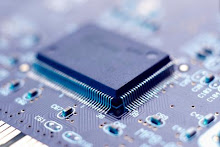2010 International Computer Music Conference in NY. I wish I could go! |
| 2010 International Computer Music Conference in NY. I wish I could go! Posted: 30 May 2010 10:39 AM PDT I'm usually too busy during the last month or so of the school year to attend conferences. One I'd really like to attend is the 2010 International Computer Music Conference in N.Y. Music is an important component of interactive multimedia content, and new technologies have made things a lot easier for musicians who are technologically inclined. Conferences like ICMC are a great way to see - and hear - what is going on. Links: ICMC Paper Schedule ICMC 2010 Poster/Demo Schedule Thomas Erbe's ICMC Workshop: Pure Data Object Programming (see bio and plug below) Intriguing Topics: "Gestural Shaping and Transformation in a Universal Space of Structure and Sound" "SoundCatcher: explorations in audio-looping and time-freezing using an open-air gestural controller" "Sense/Stage - low cost, open source wireless sensor infrastructure for live performance and interactive, real-time environments" "The Four M's: Music, Mind, Motion, Machines" "A Wireless, Real-time Social Music Performance System for Mobile Phones" "Because we are all falling down: Physics, Gestures, and Relative Realities" "Argos: An open-source application for building multi-touch musical interfaces" "Peacock: a non-haptic 3D performance interface" "Head Tracking for 3D Audio using the Nintendo WII" "The Avatar Initiative- An Interdisciplinary Approach to Digital Media Research and Education" "Computer Controlled Video as a Multi-modal Interface in Live Acousmatic Music" "The Machine Orchestra" "Eye. Breathe. Music" "Combining audiovisual mappings for 3D musical interaction" ICMC Unconference Categories PdBarCamp Sensory Interaction in Composition and Performance Language, Neurology, and Acoustics Open Scores and Accessible, Consumer Devices Issues in Computer Music Performance Computer Music and Society: Questions of Dissemination Realistically, I'd be happy with a bit more time to play my keyboard!  (The very first class I took when I decided to return to school to take computer classes was computer music technology.) My plug for Tom Erbe, from the ICMC website Instructor Bios: "Tom Erbe has had an important role in American experimental and electronic music of the last 20 years. In addition to his pioneering and widely used program SoundHack, he has become one of the most sought after and respected sound engineers for contemporary music. In 2004 he rejoined the faculty of UCSD in the Department of Music and serves as Studio Director. Most recently Tom has released SoundHack Spectral Shapers, the first of a planned set of three plugin bundles to bring extreme spectral processing to the VST, AU and RTAS formats." If you are thinking about experimenting with sound, Tom Erbe's SoundHack freeware is awesome. His spectral shapers are worth every penny. (I used the +binaural filter to create a 3D effect of racing car sounds for one of the students I work with who has autism and loves racing cars.) +binaural This filter places a sound at a specific position around the listener's head. Use it with a reverb to create a virtual environment. When used with it's LFO, +binaural can place various beats or parts of a loop in specific repeatable positions. SOMEWHAT RELATED When I get a moment, I'm reading my latest issue of IEEE Multimedia cover-to-cover: Special Issue: Mobile and Ubiquitous Multimedia  (The second class I took after I returned to school to take computer classes was Computer and Internet Multimedia.) |
| You are subscribed to email updates from Interactive Multimedia Technology To stop receiving these emails, you may unsubscribe now. | Email delivery powered by Google |
| Google Inc., 20 West Kinzie, Chicago IL USA 60610 | |









